Proud to be different in STEM
LGBTQ+ scientists and engineers are coming out and becoming visible to support the next generation
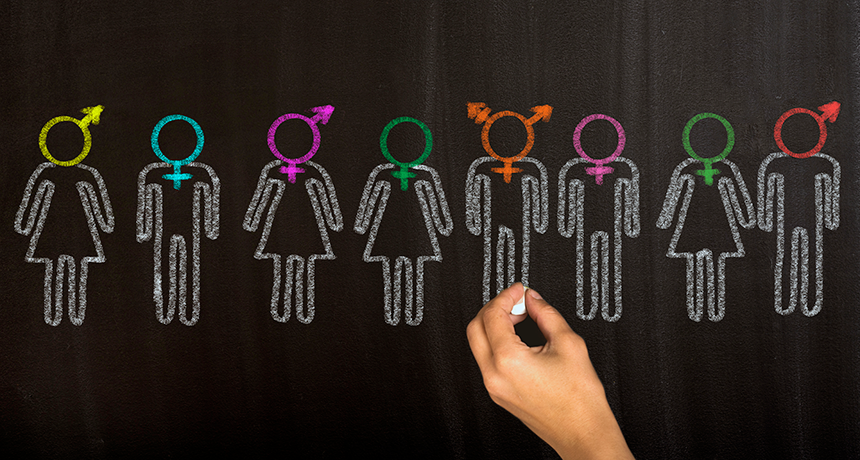
Society used to think of sexuality as just having two options: men who like women, and women who like men. But now it's recognized that sexuality is far more complex, defined by what individuals feel they are and the different people to whom they are attracted. The good news for students today: There is a place for all of these people in science and engineering.
marrio31/iStock/Getty Images Plus; adapted by L. Steenblik Hwang
By Bryn Nelson
Grace Williams was 9 when her dad learned he had Alzheimer’s disease. Scientists don’t yet know what causes this incurable brain condition, which makes people more confused and forgetful. By age 12, Williams had become her father’s main caregiver. She spent hours in hospitals with him and saw how he struggled to get good care and information about his disease.
“I was in a part of Louisiana that didn’t have the best healthcare system,” she says. His sickness “devastated” the family. While dealing with her father’s disease, Williams found her future. She says the experience “sparked my interest to find out more about how the brain works, how the body works.” She became determined to help others so they wouldn’t have to go through the same ordeal.
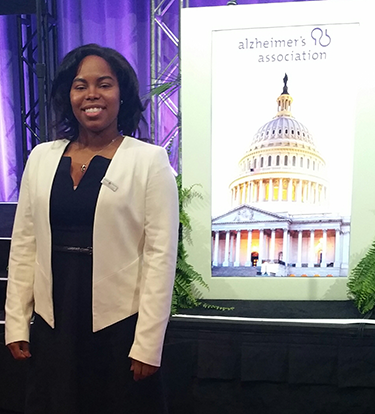
Williams, though, had to overcome many hurdles before she could achieve her dream of being a biomedical engineer. Her career in STEM — which stands for science, technology, engineering and math — involves designing medical devices, tests and tools for patients.
Her family was poor and Williams had to stay in Louisiana to help take care of her dad. She was the only student of color in her honors program in high school, and one of only three women in her honors engineering program in college. She heard comments that questioned whether she, as a black woman, should even be in the program.
Then in graduate school, she came across a new type of discrimination. An older student told her that LGBTQ+ students shouldn’t be trained in the same place as other students. (LGBTQ stands for lesbian, gay, bisexual, transgender and queer. The “+” sign refers to people with sexual or gender identities who don’t fit in the other categories.) That older student said he would refuse to train or work with LGBTQ+ students if he found out about them.
Williams is bisexual and was only out to her friends at the time. (“Out” means being open and honest about your sexual orientation, or who you’re attracted to.) That older student’s comments left her hurt and discouraged.
Unfortunately, Williams’ experience is not uncommon. LGBTQ+ individuals experience discrimination in many areas of life. And that includes in STEM.
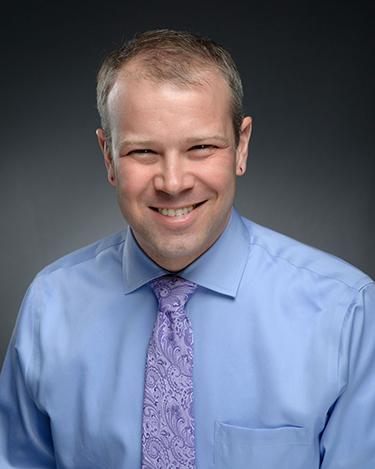
Bryce Hughes is an assistant professor of education at Montana State University in Bozeman. He is studying why some LGBTQ+ students decide to quit their STEM careers. Students can get discouraged if other people exclude them or question why they’re in STEM, he’s found. “It’s usually a factor that we don’t think about with majority students — this idea of, ‘Do I belong?’”
In a 2018 study in Science Advances, Hughes found that students who identify as sexual minorities (LGBQ) were less likely than straight students to make it to the fourth year of a STEM program. For every 100 straight college students who made it, in fact, only 90 LGBQ students did.
Why? Feeling alone, unwelcome or unsupported may be one reason. Another, he says, may be due to gender stereotypes. These are beliefs about how men and women should dress or act. Many people view gay and bisexual men as more feminine than straight men. Because of that, some people may discourage them from working in fields seen as more masculine, such as engineering.
But to help solve some of our biggest problems, the world needs the best and brightest people — regardless of their gender identities or presentation, he and other experts say. If some of these people quit because they feel excluded or are told they don’t belong, science and engineering will never benefit from their talents.
“For LGBTQ kids who want to pursue these paths, I think it’s important for them to realize that we’re trying to make it better,” Hughes says. “Shouldn’t everybody be able to do science if that’s something they’re good at and it’s something they want to do?”
Adam Dylewski/Explainr
Finding their place
Growing up in North Carolina, Joey Nelson loved playing in the woods by his house. He became curious about the world around him. While in college at the University of Virginia in Charlottesville, he was drawn to environmental science and math. He began to think about smaller and smaller things. Eventually, that led him to geology, the study of the Earth, its rocks and the small ways in which they can change over time.
Nelson’s father is Mexican and his mother is white. He sometimes wonders where he fits in. He used to wonder the same thing about his role in science. Geologists spend a lot of time outdoors. “You’re trouncing around with a rock hammer breaking open rocks,” Nelson says. Anyone can do field research, but some people hold outdated stereotypes that men are better suited to the outdoor work in geology. Nelson is a more feminine man who identifies as queer. He felt that some of the other geologists weren’t always welcoming and supportive of him.
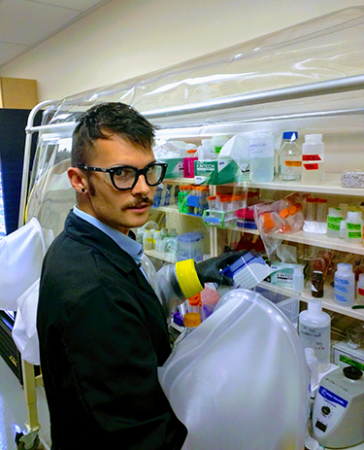
The word queer used to be hurtful for LGBTQ+ people. Today, many of them use it as an inclusive term to describe themselves and anyone whose sexual orientation or gender identity puts them in the minority.
Nelson began to doubt whether he should be a geologist at all. But then another part of him said of course he should go for it. “You’ve been in the woods since you were a little kid interested in these things,” he remembers thinking. “This is first and foremost where you belong.”
Nelson earned his PhD and is now a geochemist at Stanford University in Palo Alto, Calif. His research examines how metals and other molecules in water attach to the surface of rocks. “This is important because all things that are dissolved in water have a use or a danger,” he says. Some may be nutrients while others are poisons. “So it’s important to understand how things stick to and get unstuck from these rocks within groundwater,” he explains.
For a separate project, Nelson joined other scientists to conduct the second of two large surveys called Queer in STEM. These surveys have given thousands of LGBTQ+ scientists and engineers, mostly from the United States and Canada, a chance to describe their experiences at work, school and home.
This second survey recently found that about 60 percent of LGBQ scientists and engineers were out in their personal lives. But only 16 percent of them were out at work. That means they had to go back “into the closet” every day, or keep their sexual orientation a secret. The more welcoming and safe their workplace felt, though, the more likely they were to be out. Even so, LGBQ people reported being harassed and hearing mean comments at work about sexual orientation more often than straight people did. A separate part of the survey looked specifically at transgender and gender nonbinary scientists, and found similar results.
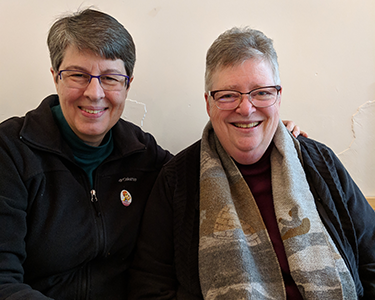
Rochelle Diamond remembers the pain of being harassed decades ago. When a coworker found out that she was a lesbian, he tried to ruin her career by sabotaging her lab experiments.
Fortunately, she found a far more supportive workplace at the California Institute of Technology in Pasadena. In one of her roles, she has managed the same lab for more than 35 years. Her lab studies how immature cells in the immune system decide which kind of specialists to become. The cells have many decisions to make, and the lab is examining which signals help them take one path or another.
Being out at school or work can be difficult. But Diamond says scientists and engineers are more productive when they can be themselves. By being out, they can bring all of their energy to help solve problems. “Even though we learn from the same textbooks, we all have different perspectives and different ways of interpreting information. And that is extremely valuable,” Diamond says.
Nearly 40 years ago, Diamond helped to start a support group called NOGLSTP. That stands for National Organization of Gay and Lesbian Scientists and Technical Professionals. The group connects LGBTQ+ students and professionals in STEM fields and helps to protect their rights. The organization educates the public about LGBTQ+ topics, holds get-togethers and helps scientists and engineers find good places to work.
Gaining support, facing obstacles
Like Nelson and Diamond, Williams stuck with it, despite that older student’s hurtful comments. In graduate school at Louisiana Tech University in Ruston, she worked on research to create a better test for Alzheimer’s disease. With an earlier diagnosis, patients might get help sooner than her dad did and live longer. She also worked with the nonprofit Alzheimer’s Association to help improve patient care in Louisiana.
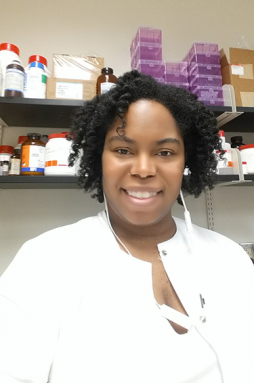
Williams received support from a campus group called Prism that offers help and safe spaces to LGBTQ+ students. She also received support from students like her across the country through an online group called the Student Doctor Network.
Other students have found support through a nonprofit group called oSTEM (Out in Science, Technology, Engineering and Mathematics). The group has more than 100 chapters at colleges and universities in the United States and other countries.
Websites such as 500 Queer Scientists have raised even more awareness and helped people find role models. On the site, people around the world in STEM professions have shared their pictures and stories. One goal is to “help the current generation recognize they’re not alone.”
Beyond the growth of supportive groups, many universities and major companies in the United States have pledged to protect and support LGBTQ+ students and employees. Same-sex couples can legally marry throughout the United States, and more states and countries are passing laws to ban discrimination at work.
Despite the progress, LGBTQ+ people still face many challenges.
In seven states, for example, teachers can’t discuss LGBTQ+ topics in the classroom in a positive way. That means some students may never know how much of a trailblazer astronaut Sally Ride was. She was the first American woman in space and a lesbian who had a Navy research ship named after her. They may not learn the full story about British math genius Alan Turing either. During World War II, Turing invented a machine that solved the “Enigma” code the Nazis used to send secret messages. Turing’s efforts helped the Allies win the war, but he was later arrested for being gay.
Twenty-one states and Washington, D.C., now protect people from being fired from their jobs based on their sexual orientation. Another 12 states protect public employees, such as people who work in state-run labs. But in 17 states it’s still possible to be fired from any job for being gay, bisexual, lesbian or queer.
A project called the STEM Inclusion Study recently partnered with 17 professional groups to survey people who work in STEM fields. The survey found that LGBTQ people work just as hard and are just as educated as other members. Even so, the survey found that LGBTQ scientists and engineers didn’t receive as much help and their work wasn’t valued as much by others. That’s like having less time to finish a quiz than your classmates and then getting a worse grade for the same answers.
As a result, LGBTQ+ people said they were more likely than their straight peers to want to leave their STEM careers.
Adam Dylewski/Explainr
A unique perspective
Researchers who have found their way, despite the discrimination they’ve faced, say they’re determined to make the path easier for others. That includes Mohamed Yakub. When he was 12, he moved with his Indian parents and sister to Wisconsin from the East African nation of Kenya. His parents wanted him to be a doctor, he says. But there was a big problem: He found the two days he spent volunteering in a hospital emergency room far too stressful.
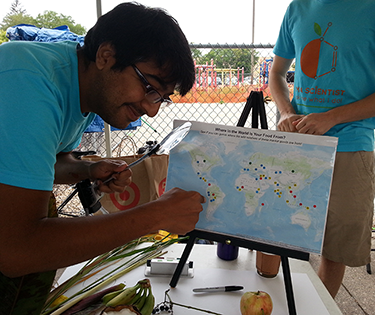
Still, Yakub loved biology. So he began studying plants. He received his PhD at the University of Minnesota by studying how plants evolve and survive in cities. Urban plants have to grow in warmer and drier conditions than those in rural areas, where there’s more grass and less concrete.
Yakub realized that even more than research, he enjoyed teaching others about science. With two friends, he started a program called Market Science. “We would go to the farmer’s market, host a science-based booth and talk to people about what science is,” he explains.
Because he wanted to be himself, Yakub sometimes wore high heels or brightly colored nails to the market. He identifies as gay and wanted to show others that they can be themselves and still be successful in science.
At the market with his friends, Yakub felt safe. But many places are not as welcoming to people who are a bit different. And so, Yakub says, he’s been much more cautious when traveling for work to other places that are less safe for LGBTQ+ people, whether in northern Minnesota or Africa.
And there’s good reason for that caution. In the United States, reports of people harassing, intimidating or acting violently toward others based on their sexual orientation are increasing. They’re known as hate crimes. But it can be even worse in some other places.
In about 70 countries, it’s still against the law for same-sex couples to be together. If someone is caught, they can be put in jail for years. In eight countries and in parts of two others, those who break the law can even be put to death. (These places are Brunei, Iran, Mauritania, Qatar, Saudi Arabia, Sudan, United Arab Emirates, Yemen and parts of Nigeria and Somalia.) That means LGBTQ+ scientists and engineers need to be very careful about where they travel, whether for work or fun.
Yakub now works in Washington, D.C., for a service of the American Association for the Advancement of Science (AAAS). This SciLine service helps journalists connect with scientists so that the public can learn more about what scientists do and why it matters.
Why does diversity in STEM matter? “There is no one else out there that brings the perspective that I do,” Yakub argues. His unique experiences may help him ask questions that others haven’t even thought of. Or he may look at the same question in a very different way.
Alone no more
Kei Koizumi (KAY Koy-ZOO-me) grew up in Columbus, Ohio. He was one of the only Asian-Americans in his high school. He didn’t start meeting other gay men until he was in college. Being a minority within a minority, he notes, can be lonely. “I always felt like I was the only one.”
But it didn’t stop him from continuing to study science and engineering. Koizumi was fascinated by how STEM fields help governments make plans and decisions. He decided to pursue a career in science policy. For eight years, he worked in Washington, D.C., for President Barack Obama in the Office of Science and Technology Policy. Koizumi created guidelines that the government uses to pay for research. He also made sure that the President and his team had the best scientific information and advice to help them make good decisions.
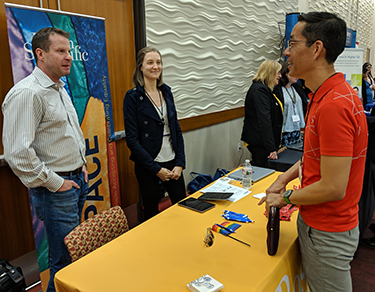
He now works as a senior advisor for science policy at the AAAS and teaches classes in science policy at George Washington University in Washington, D.C. Students of all backgrounds need to know that a career in STEM is open to them, “even if they don’t always see people who look like them or who are like them,” Koizumi says. “It’s important to show students that you can be gay and Asian, for one thing.”
Research suggests that diverse and inclusive labs and workplaces do better science, he says. One key to making people feel like they belong is to give them diverse mentors and role models. Being visible also helps those who are afraid to be themselves, Koizumi says. “I think those of us who can come out need to, because there’s so many who can’t.”
Angel Kaur (COOR) wants to be another one of those mentors and role models. She was born in India and moved to the United States for college when she was 18. Kaur was always drawn to biology and is now director of the neuroscience program at the University of North Carolina at Asheville.
Kaur is working with her research students on a project to understand how nerve cells die during a disease known as ALS. That’s short for amyotrophic lateral sclerosis (AY-my-oh-TROW-fik LAT-er-ul Sklair-OH-sis). As nerve cells die, signals between the brain and muscles are lost. Without the proper messages, muscles can no longer move, she explains. To prevent that, she wants to figure out why and how the cells die.
She also teaches a popular class on science fiction movies that include neuroscience, such as “Get Out!” and “Eternal Sunshine of the Spotless Mind.”
Kaur has four-year-old twins and identifies as queer. “There’s a lot of things that make me different,” she says. But she has refused to let these differences define her or hold her back. As a queer woman of color, Kaur says she feels lucky to have received support throughout her career.
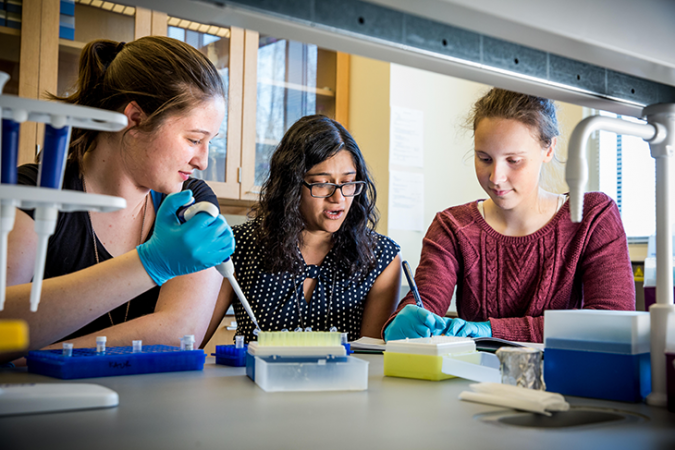
Now, she wants to make sure that her students have the same opportunities. “I strongly believe that representation is one of the most powerful tools that we have.” She says, “It can show people that they are capable of whatever it is that they want to do.”
Some LGBTQ+ students and researchers have to deal with hurtful comments and discrimination. But seeking out and talking to friends and allies — whether supportive students, researchers, mentors or local or national groups — can buffer them from the worst. “There will be things said that may be upsetting,” Kaur acknowledges. “But that community — there’s so much power in that.”
Kaur, Koizumi and Diamond say that being open about who they are helps others know that it’s okay to be themselves. Being out shows that diverse people can do well in STEM fields and that they’re all needed and valued.
Williams is likewise using her position to help others. After receiving her PhD, she moved to Washington, D.C., to accept two fellowships. For her current one at the U.S. Agency for International Development, she is helping to think of new ways that science and technology can aid people around the world.
Eventually, Williams’ dad could no longer recognize her because of his Alzheimer’s disease. But he still told everyone that his daughter would become a doctor and help people when she grew up.
And now, she is. Williams wants to follow her passion of using her training to improve herself and the health and well-being of others. Everyone, she says, deserves the chance to get an education and follow their dreams.
Like Williams and so many others who grew up with doubts, Diamond says, students need to know that they belong in STEM. “Whoever you are, it’s OK,” she says. “You’re valuable.”
This is part of a Cool Jobs series on the value of diversity in science, technology, engineering and mathematics. It has been made possible with generous support from Arconic Foundation.







